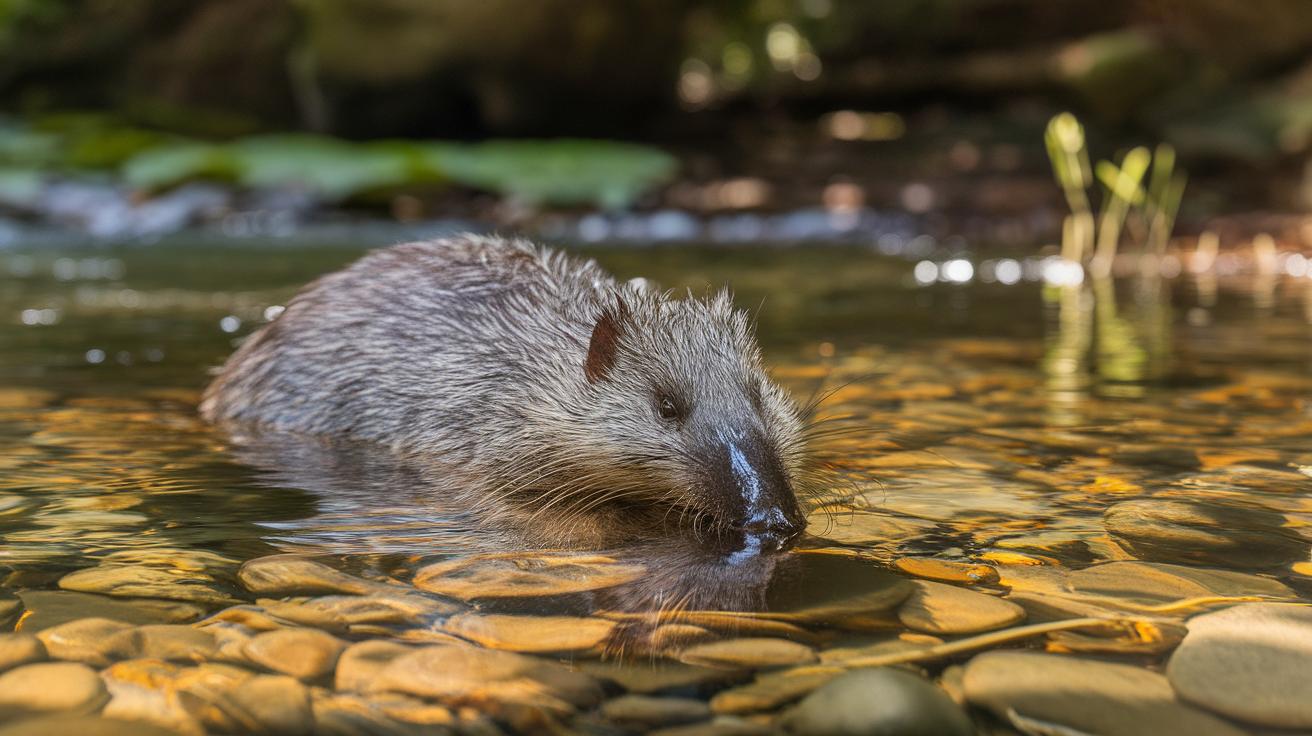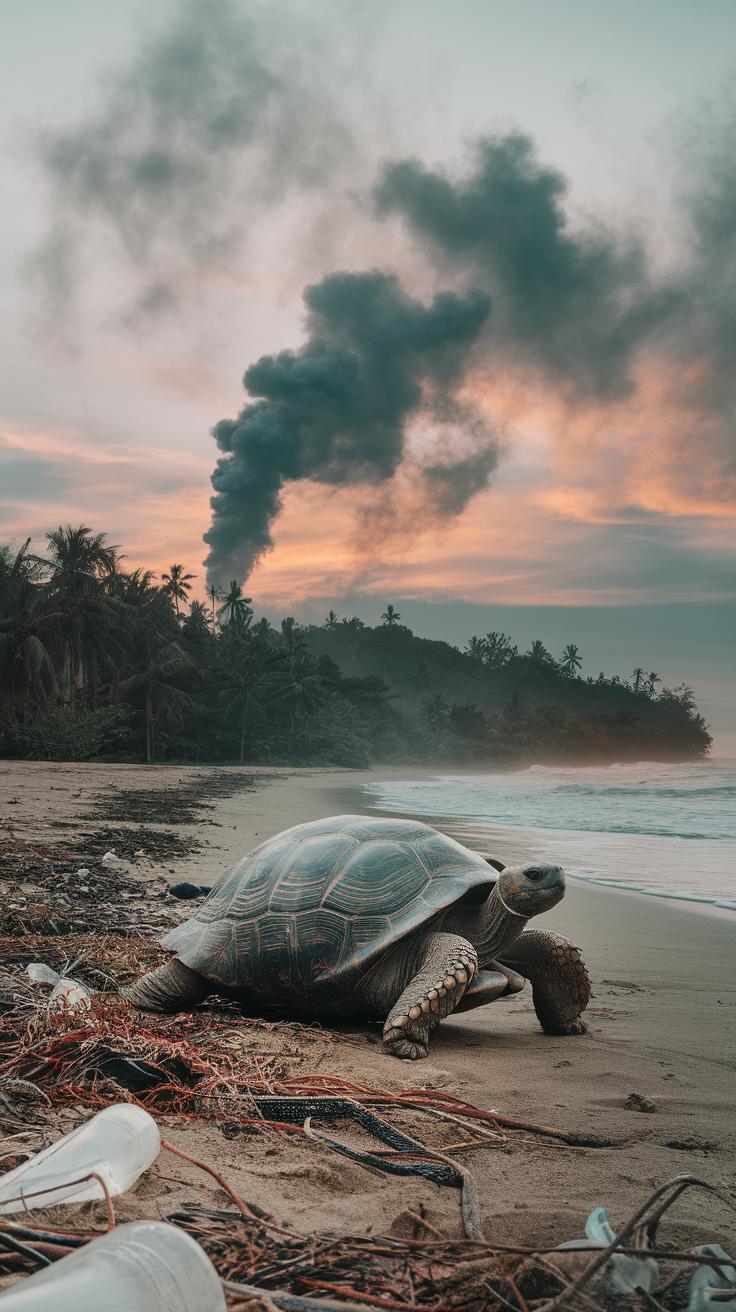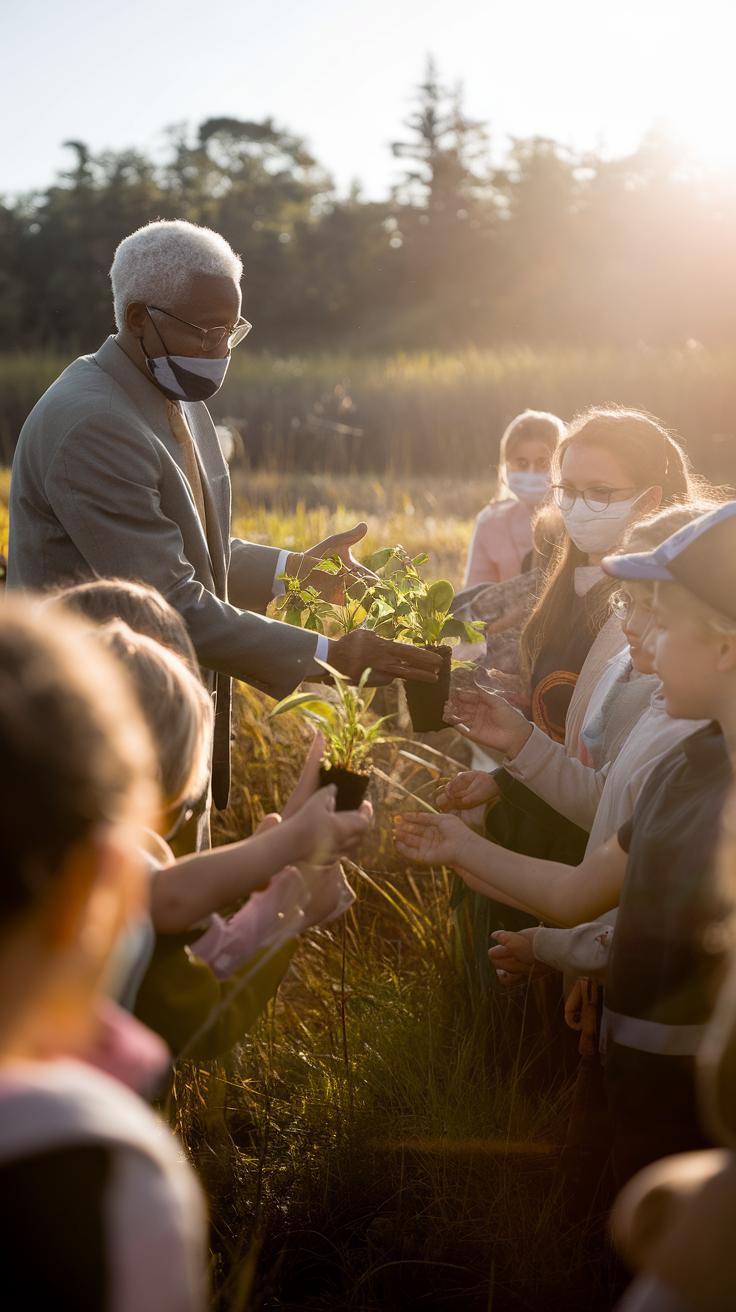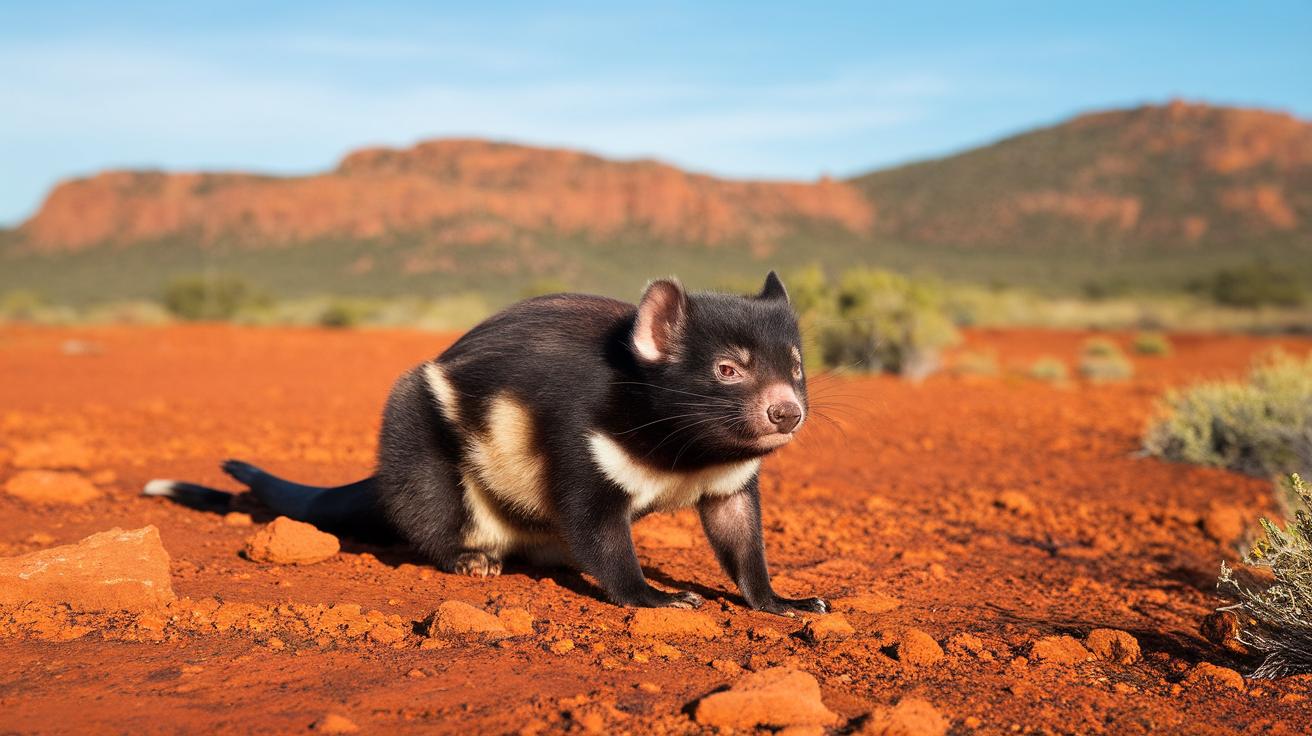Introduction
The fascination with rare animals lies in their mystique and the mysteries of their survival. Many rare species are on the brink of extinction, making their conservation critically important. This article seeks to explore the intriguing lives of these elusive creatures, delving into their habitats, behaviors, and the ongoing efforts to protect them. The term ‘rare animals’ encompasses a variety of species, each with unique characteristics that distinguish them from more common wildlife. Understanding these animals is essential not just for scientific knowledge but also for the preservation of biodiversity.
As we journey through the world of rare animals, we will examine various aspects, including the factors contributing to their rarity, the challenges they face in their environments, and the conservation strategies being implemented to ensure their survival. By shedding light on such topics, this article aims to raise awareness and appreciation for these remarkable beings and inspire action toward their protection.
Understanding Rarity in Wildlife Defining Rare Animals and Their Conservation Importance
Defining Rare Animals
Rare animals are species that have small populations, making them vulnerable to extinction. The definition often varies based on geographic areas, life cycles, and habitat requirements. Factors contributing to their rarity include habitat loss, climate change, pollution, and poaching. Understanding these factors is essential not only for identifying rare species but also for implementing effective conservation strategies.
The Importance of Recognizing Rarity
Awareness of rarity helps prioritize conservation efforts. By focusing on the needs of rare animals, conservationists can allocate resources more effectively and raise public awareness. This understanding fosters ecosystem health, as rare species often play crucial roles in their environments, influencing biodiversity and stability. The survival of these unique creatures is a testament to the intricate tapestry of life on Earth, emphasizing the importance of preserving their habitats.
Notable Rare Species Around the World Secrets of Elusive Wildlife
Famous Rare Animals and Their Habitats
Across the globe, numerous rare species exemplify nature’s marvels while grappling with survival challenges. The Amur leopard, residing in the temperate forests of the Russian Far East, is critically endangered due to habitat loss and poaching. With fewer than 100 individuals left, conserving this majestic creature has become a priority. Similarly, the Javan rhinoceros, once found throughout Southeast Asia, now solely exists in Ujung Kulon National Park, Indonesia, facing threats from invasive species and limited genetic diversity.
Challenges Encountered by Rare Animals
Examining the plight of rare animals illuminates the broader environmental issues. The Kakapo, a flightless parrot native to New Zealand, has suffered from habitat destruction and introduced predators. Meanwhile, the vaquita, a small porpoise in the Gulf of California, teeters on the brink of extinction, primarily due to illegal fishing practices. Each species represents not just the fragility of life but also the urgent need for dedicated conservation efforts.
The Role of Conservation Organizations in Protecting Rare Animals
Strategies and Initiatives
Conservation organizations play a pivotal role in safeguarding rare animals and their ecosystems. They employ a variety of strategies, including habitat restoration, anti-poaching efforts, and community engagement programs. Through scientific research, these organizations gather critical data to identify vulnerable species and the ecological threats they face. This information is then used to advocate for policies that protect these animals and preserve their natural environments.
Collaboration for Change
Partnerships between conservation organizations, local communities, and governments enhance the effectiveness of these initiatives. Engaging local populations not only fosters stewardship of wildlife but also provides economic benefits through ecotourism, which can support rare species. Educational campaigns raise awareness about endangered species, highlighting their ecological importance and inspiring individuals to contribute to preservation efforts.
Ultimately, the collaborative nature of these organizations is vital in implementing sustainable practices that ensure the survival of rare animals and their habitats in an ever-changing world.
Human Impact and Its Consequences Investigate How Human Activities Affect Rare Animals and Their Ecosystems
The impact of human activities on rare animals and their ecosystems is profound and often detrimental. Habitat destruction due to urban development, agriculture, and logging leads to fragmentation, isolating populations and reducing genetic diversity. Road construction frequently causes fatal encounters between wildlife and vehicles, while pollution from industrial sources introduces toxins into ecosystems, negatively affecting both flora and fauna.
Climate change, driven by industrialization and unsustainable practices, poses an existential threat to many species. Altered weather patterns disrupt breeding cycles and food availability, making survival increasingly difficult. Overexploitation of resources, such as fishing and poaching, exacerbates these challenges, pushing certain rare animals closer to extinction.
The intertwined fates of these unique creatures and their habitats highlight the importance of understanding human influence. Efforts to mitigate these impacts require collective action, fostering a sense of responsibility towards conservation. Such measures can pave the way for healthier ecosystems and the preservation of rare wildlife, ensuring their survival for future generations.
Community Involvement in Conservation Protecting Rare Species
Empowering Local Communities
Engaging local communities in conservation efforts is pivotal for protecting rare species. Community-driven initiatives transform individuals into stewards of their environment, fostering a deeper connection to local ecosystems. By participating in awareness programs and habitat restoration projects, communities can directly impact biodiversity preservation. Educational workshops on the importance of rare species cultivate respect and understanding, encouraging residents to advocate for their protection.
Collaborative Strategies for Success
Conservation partnerships between NGOs and local populations facilitate resource sharing and knowledge exchange. These collaborations can yield innovative strategies such as eco-tourism, which not only supports local economies but also raises funds for conservation. Community-led monitoring programs enable people to track wildlife populations, providing critical data for conservationists. By integrating traditional ecological knowledge with modern conservation science, locals can play a crucial role in safeguarding rare animals and their habitats.
The Science Behind Conservation Investigating the Research Driving Efforts for Rare Animals
Research Methodologies in Conservation
Scientific research forms the backbone of conservation initiatives aimed at protecting rare animals. Through rigorous methods, researchers gather data on species populations, habitat requirements, and behavioral patterns. Field studies often include tracking movements with radio collars or GPS devices, which provide insights into migration routes and breeding sites. Genetic analysis allows scientists to understand population dynamics and identify inbreeding issues, crucial for conservation planning. By compiling extensive data, researchers can identify critical habitats needing protection and develop effective management strategies.
The Role of Collaboration in Research
Collaboration among researchers, local communities, and conservation organizations enhances the effectiveness of these scientific efforts. By sharing knowledge and resources, stakeholders can create comprehensive plans that consider ecological, cultural, and social factors. Citizen science initiatives encourage public participation in data collection, expanding research scope and fostering community investment in conservation outcomes. Ultimately, the integration of scientific inquiry with community engagement leads to actionable insights, ensuring the long-term survival of rare species in increasingly threatened ecosystems.
Technological Advancements in Conservation
Monitoring Populations of Rare Animals
Emerging technologies have revolutionized conservation efforts for rare animals, enabling more effective monitoring and protection strategies. Satellite imagery, for instance, facilitates habitat mapping and identifying hotspots for endangered species, while drone technology allows for aerial surveillance of hard-to-reach areas. These tools provide valuable data on population dynamics and distribution, essential for tailoring conservation plans. Camera traps equipped with motion sensors also play a significant role, capturing images of elusive species without human interference, thus revealing their behavior and population density in real-time.
Data Analysis and Innovative Solutions
The integration of artificial intelligence and machine learning into conservation practices has transformed data analysis. These technologies can interpret vast amounts of information rapidly, identifying trends and patterns in animal behavior and environmental changes. Genetic analysis techniques, including DNA barcoding, further enhance understanding of genetic diversity among populations. This insight helps in crafting breeding programs aimed at enhancing genetic health. As technological advancements continue, they not only improve the efficacy of conservation methods but also foster a deeper understanding of the intricate lives of rare animals.
Legislation and Policy for Protection Analyzing Laws and Frameworks for Rare Animal Conservation
Guarding Fragile Species through Legal Measures
Crafting laws to safeguard rare wildlife is a multifaceted challenge. Numerous international agreements, such as the Convention on International Trade in Endangered Species (CITES), play a pivotal role. These treaties regulate trade and prohibit the exploitation of rare species, ensuring that wildlife populations remain sustainable. National policies, such as the Endangered Species Act in the United States, establish protections for species at risk, creating recovery plans and designating critical habitats critical for survival.
Local governance also contributes significantly to wildlife conservation. Enforcement of regional regulations can protect habitats from encroachment and poaching. Collaboration between governments, conservation organizations, and local communities fosters comprehensive approaches to biodiversity preservation, enabling effective implementation of these laws. Ultimately, the coexistence of a robust legal framework and active enforcement mechanisms is vital to enhancing the resilience of rare wildlife against the pressures of habitat loss and climate change.
Policy Initiatives and Their Impact
Policies supporting conservation efforts must evolve to address changing environmental conditions and habitat requirements. Innovative funding mechanisms, such as conservation easements, provide financial incentives to landowners to preserve natural habitats. Moreover, species recovery programs based on scientific research contribute to more targeted conservation efforts. These initiatives not only focus on protecting individual species but also advocate for broader ecosystem management that benefits all wildlife. The integration of public awareness campaigns ensures that communities recognize the importance of legislative protections, fostering stewardship toward their natural surroundings.
Future of Rare Animals and Conservation
Prospects for Elusive Wildlife
The future of rare animals largely depends on targeted conservation initiatives and global collaboration. Current efforts emphasize habitat restoration, which is vital for species such as the Saola and the Kakapo, both known for their dwindling populations due to habitat loss. In addition, advancements in genetic technology offer new avenues for wildlife management, potentially allowing for the revival of critically endangered species through breeding programs. The integration of community involvement in conservation strategies could also prove essential, as local populations often hold invaluable knowledge about the ecosystems they inhabit. Educational programs that highlight the importance of preserving biodiversity play a crucial role in fostering awareness and encouraging sustainable practices.
Conclusions
The exploration of rare animals reveals much about the delicate balance of ecosystems and the consequences of human impact on nature. The survival of these species depends on understanding their needs and implementing effective conservation strategies. As highlighted throughout this article, rare animals are not just symbols of the wild; they play vital roles in their respective habitats. Protecting them is crucial for maintaining ecological balance and ensuring future generations can witness their beauty.
To protect rare animals, collective efforts from individuals, communities, and organizations are essential. Raising awareness, supporting conservation initiatives, and advocating for policies that protect natural habitats are steps everyone can take. By valuing and protecting rare animals, we contribute to preserving our planet’s biodiversity and ensuring that these captivating creatures continue to inspire awe and curiosity in the hearts of people everywhere.

















